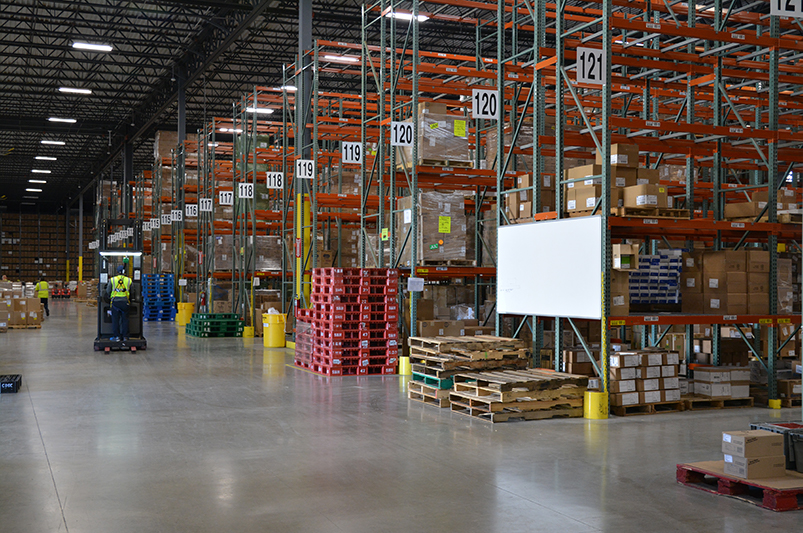New Tech Keeps Warehouse Workers Safe
Warehouse workers spend hours a day bending, twisting and lifting heavy boxes, but there is a safe and an unsafe way to do their jobs. Workers who bend too much at their hips or don’t properly use their legs put unnecessary strain on their lower backs. StrongArm Technologies Inc. has developed a device that is worn by workers and vibrates when they bend or twist incorrectly, an immediate, gentle reminder to work safely. Data from the StrongArm devices worn by workers is collected and can be analyzed by managers to identify risks and determine if extra precautions or coaching is required to prevent short term and long term injuries.
More than 30 companies and 15,000 users are using StrongArms devices. The company claims that users wearing their technology have suffered 20-50% fewer injuries. Despite the benefits, some observers have voiced criticism of the data collection aspects of the device, alleging employers could abuse the data to unfairly discipline workers, and that tracking workers’ every movement may be over the top.
As Walmart Catches Up, Amazon Enters The Grocery Fray
A recent survey indicates that Walmart may be catching up and even surpassing Amazon online, at least in terms of customer preference. According to a report conducted by First Insight, the percent of consumers who prefer shopping on Walmart.com over Amazon has grown to 55% this year, an increase of 8%. Amazon’s ecommerce sales dwarf those of Walmart, but the number of people shopping 6 times or more per month is steadily declining (see chart below). But the battle between the online leader and the brick-and-mortar behemoth is entering a new phase as Amazon plans a new entry in grocery retail.
The frequency of consumers shopping on Amazon
In-store fulfillment – especially for groceries – is Walmart’s edge. The company is piloting delivery of groceries directly to your fridge in three cities, and it is also leveraging its enormous retail network to provide BOPIS (buy online pick-up in store) services. Grocery pick up and delivery is a major component of the growth in Walmart’s ecommerce sales.
Meanwhile, Amazon is reportedly launching a new grocery store chain, in addition to Whole Foods (which it purchased in 2017). While some observers see this as a shot across Walmart’s bow, the grocery business is notoriously competitive, with extremely tight margins. European retailers Aldi and Lidl are aggressively expanding in the US, and Tesco, the major UK grocery chain, failed an earlier attempt to crack the US market.
Grocery distribution is also a far different business than ecommerce fulfillment. Walmart, Kroger and other established retailers already have well-established, efficient distribution networks that they are expanding or supplementing to support ecommerce fulfillment. Their grocery distribution advantages cannot be taken lightly. As Walmart strives to catch up in ecommerce fulfillment, the competition in retail replenishment and distribution is just starting.
Double DC Productivity Without Robots or Automation
Many DCs are investigating robotics and automation solutions to reduce labor by eliminating travel, but the cost of those solutions puts them out of reach for
Our twenty-minute webinar will describe our unique approach to reducing travel and share examples of customers that are using Dynamic Work Optimization today to dramatically increase picking productivity.
Click here to save your virtual seat.
A Looming Warehouse Space Shortage?
Demand for warehouse space is outpacing new construction, leading to a potential shortage of new DC space in the future. According to CBRE, warehouse demand has outpaced supply since 2015 and average rental rates have increased 19.2%. A separate report notes that the warehouse market saw a 23% drop in new warehouse leases in the third quarter of 2019 due to a lack of supply. According to the report from CBRE Economic Advisors there is currently more than 255 million sq. ft. of warehouse space under construction, but 70% of it is on spec. As we reported last month, many companies are starting to look at alternative spaces, including brownfield sites in suburban locations and smaller, taller DCs in urban areas to enable faster, cheaper last-mile delivery.






